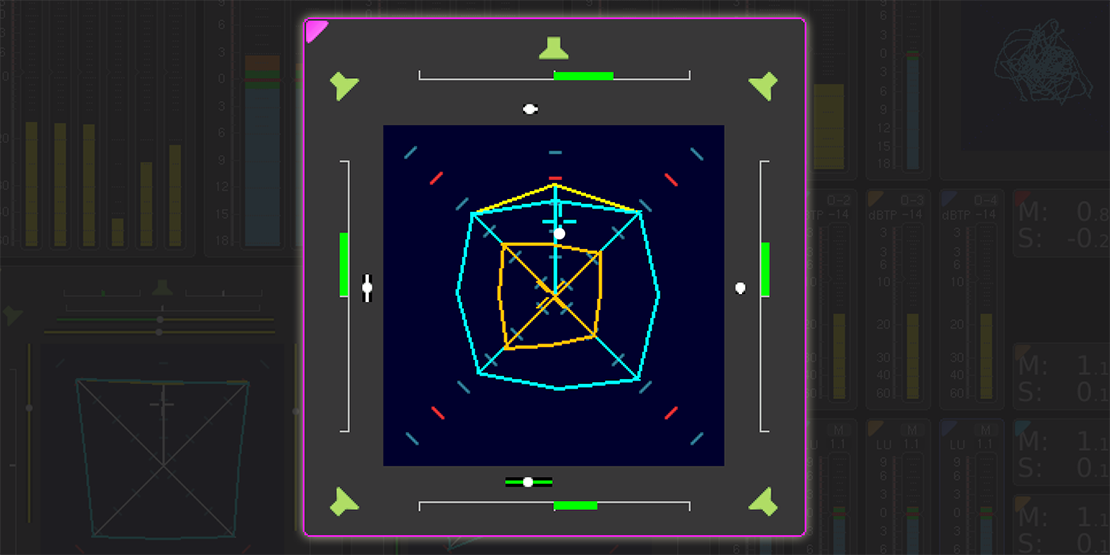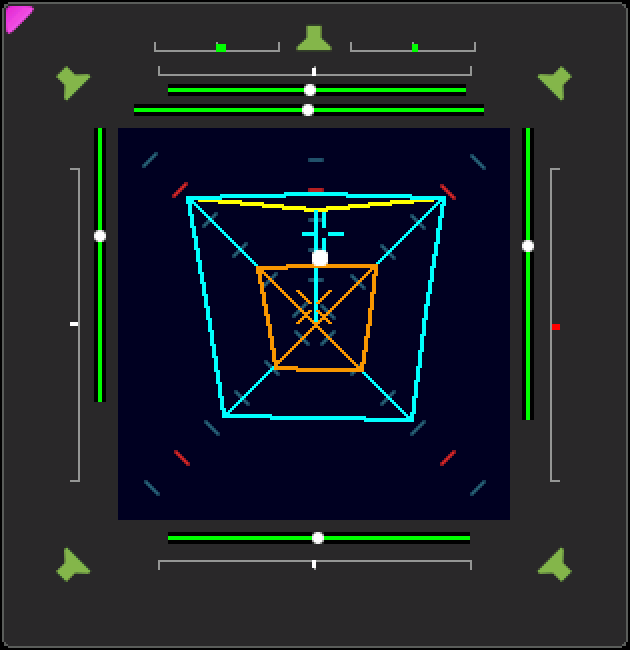
Complete Display
With new immersive sound formats such as Dolby Atmos, the audio world is having an increased focus on audio formats with a large number of audio channels.
For us as a metering focused company, the challenge is to measure and display all of these channels in a way that is usable in the many immersive audio applications, and the Immersive Sound Analyzer is our take on an instrument that can get you relevant technical and subjective parameters of formats such as 5.1.4 or even 7.1.4 in a fast and intuitive way.
As we wanted to stay as close as we can to our unique Surround Sound Analyzer, which a lot of audio engineers are already familiar with, some of the features are the same, and to understand more about the details of the Immersive Sound Analyzer, you might want to read our blog post on the SSA .
The examples in this article will be based on a standard 5.1.4 Dolby Atmos setup.
|
Sign up to learn about new blog posts! |
|
|
The Components of the ISA
First, let us have a look at each individual component of the Immersive Sound Analyzer. There are components for each of the main and upper layers, and there is also a component that shows the relationship between the layers.
5.1 Main Bed

5.1 Main Bed View
The Total Volume Indicator displays the total volume and balance of the audio material in a single view. The lengths of the bar graphs that go out from the center show the sound pressure level or loudness.
The blue, outlined area shows the 5.1 main bed signal image including its center channel signal.
The white crosshairs is the so-called Dominance Indicator (DMI) that shows the position of the subjectively perceived acoustic focal point.
4.0 Upper Bed
The orange area shows the volume and balance of the upper bed.
Our power users will immediately recognize that the Dominance Indicator (DMI) crosshairs is tilted 45 degrees and we have done this to maintain a clear distinction between the main and upper bed DMIs

4.0 Upper Bed View
The Relation Between the Main and the Upper Bed

The relationship between the main and upper bed is indicated by the size of a white dot
The relationship between the main and upper beds is indicated by the size of a white dot, and as you can see here, the white dot sits between the main and upper bed dominance indicators.
The dot is called the Immersive Dominance Indicator (IDI) and the position and size of it indicates the loudness relation between the main and the upper bed.
A very small dot indicates that there is audio only in the main bed, and a large dot indicates there is audio only in the upper bed.
Main- and Upper bed combined
Here you see the combination of the main bed and upper bed, including the IDI dot.
Once familiar with the display, you get a fast and intuitive overview of a 5.1.4 signal.

Main and Upper Bed Combined
Full ISA View

Full ISA View
The Immersive Sound Analyzer displays Total Volume Indicators for both beds simultaneously, and the position and height of the dominant signal is shown by a white dot.
The phase correlation bars display the phase relation between the different sources of the selected bed.
Like the phase correlation bars, the Phantom Source Indicators (PSI) show relations between each of the channels in a surround mix of the selected bed.
The perceived position and its height, the ambient signal (TVI) of the two beds and the spreading and phase correlation of a selectable bed can be displayed simultaneously in one easy-to-read view.
|
Sign up to learn about new blog posts! |
|
|
Practical Use
- Fast and intuitive display of relevant technical and subjective parameters of immersive signals in a fast and intuitive way
- Keep an eye on the overall surround image balance on both Main and Upper beds
- Monitor the relationship between the two layers
- Identify phase problems to make sure your audio will down mix correctly
- Check stereo width and perceived position between each channel pair
- Check the level according to SPL or loudness measures
- Identify center channel issues
- Be warned if the LFE channel has correlation problems
Technically Spoken
What is required to run ISA?
- RTW TouchMonitor TM7 or TM9 with software version 8 or higher
- Software license SW20001 Multichannel Mode
- Software license SW20002 Loudness and SPL Display
- Software license SW20004 SSA - Surround Sound Analyzer
- Software license SW20015 SSA - Immersive Sound Analyzer
ISA - Immersive Sound Analyzer Features
- Designed for Immersive audio formats based on 5.1 or 7.1 main beds and 2.0 or 4.0 upper beds
- Graphical display indicating single channel and total program loudness (Total Volume Indicator)
- Position and width of phantom sound sources (PSI) in Main- and Upper Beds
- Phase Correlation between adjacent channels
- Separate correlators for the outer adjacent channels
- Subjectively perceived acoustic focal point with the Dominance Indicator (DMI) for both Main- and Upper Beds
- Subjectively perceived acoustic focal point in the complete immersive area with the Immersive Dominance Indicator (IDI)
- LFE Phase warning (warns in case of negative correlation between any channel and LFE)
- Formats Supported: 5.1.2, 5.1.4, 7.1.2, 7.1.4

